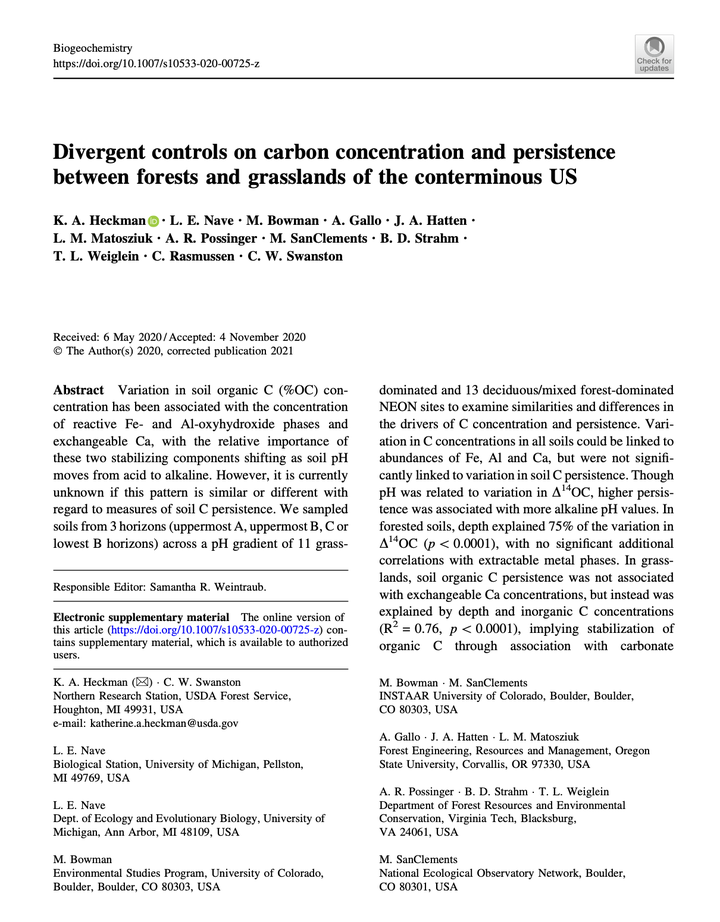Divergent controls on carbon concentration and persistence between forests and grasslands of the conterminous US

Abstract
Variation in soil organic C (%OC) concentration has been associated with the concentration of reactive Fe- and Al-oxyhydroxide phases and exchangeable Ca, with the relative importance of these two stabilizing components shifting as soil pH moves from acid to alkaline. However, it is currently unknown if this pattern is similar or different with regard to measures of soil C persistence. We sampled soils from 3 horizons (uppermost A, uppermost B, C or lowest B horizons) across a pH gradient of 11 grass dominated and 13 deciduous/mixed forest-dominated NEON sites to examine similarities and differences in the drivers of C concentration and persistence. Variation in C concentrations in all soils could be linked to abundances of Fe, Al and Ca, but were not significantly linked to variation in soil C persistence. Though pH was related to variation in D14OC, higher persistence was associated with more alkaline pH values. In forested soils, depth explained 75% of the variation in D14OC (p 0.0001), with no significant additional correlations with extractable metal phases. In grasslands, soil organic C persistence was not associated with exchangeable Ca concentrations, but instead was explained by depth and inorganic C concentrations (R2 = 0.76, p 0.0001), implying stabilization of organic C through association with carbonate precipitation. In grasslands, measures of substrate quality suggested greater persistence is also associated with a more advanced degree of decomposition. Results suggest that explanatory variables associated with C concentrations differ from those associated with persistence, and that reactive Fe- and Al-oxyhydroxide phases may not be present in high enough concentrations in most soils to offer any significant protective capacity. These results have significant implications for our understanding of how to model the soil C cycle and may suggest previously unrecognized stabilization mechanisms associated with carbonates and forms of extractable Si.
TLDR
Chicken or the egg. Grassland SOC behaves different than forest SOC. But is that because of the composition? (No). Or is it because of the climatic differences (probably) But if the climatic differences also lead to vegetation differences, then how can you separate out the climate from the vegetation? Here we attempt to do so. Download the PDF.